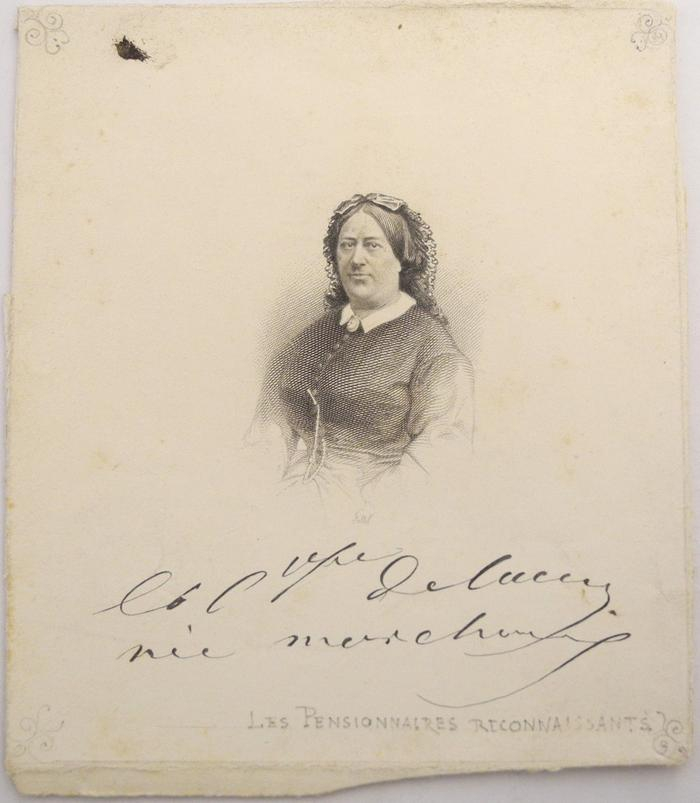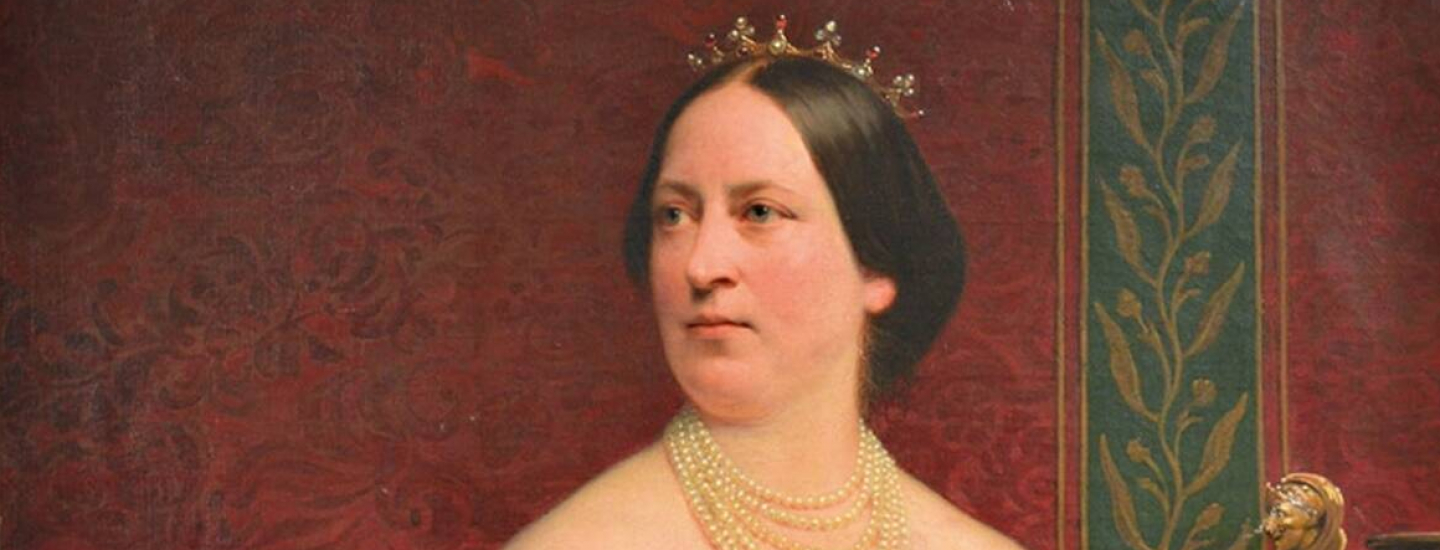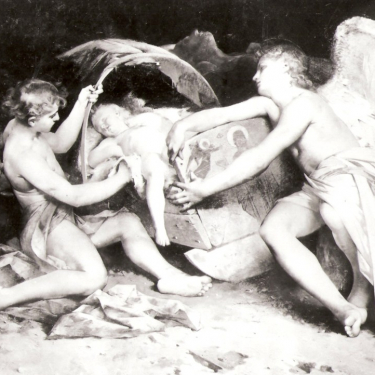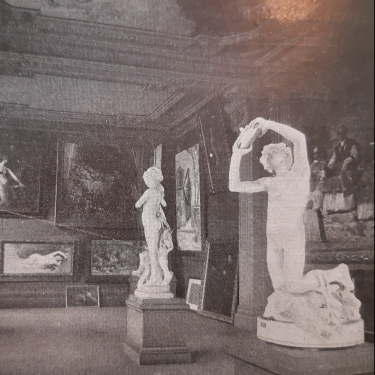Born in Paris on 29 July 1809, Anne-Sophie Marchoux was the only child of Louis-Auguste Marchoux, a notary by profession, and Marie-Sophie Vernier, the daughter of a magistrate at the Soissons civil court. Educated according to the bourgeois standards of the first half of the 19th century, Anne-Sophie was an educated and cultured young woman, and an artist in her own right. In 1836, she married Camille Maximilien Eugène Léonidas, the Count of Caen (1807-1875), the son of an imperial general. When her mother died in 1843 and her father in 1854, the Countess of Caen inherited the family fortune and the property in the 2nd arrondissement of Paris, including the Galerie Vivienne, which her father had financed in 1823. As the sole owner of this property, the Countess agreed to share part of it with her husband in exchange for her freedom. Fleeing an unhappy marriage, Anne-Sophie Marchoux often lived in the countryside, first at her residence in Meudon, then at the Prieuré farm in Saint-Georges-des-Sept-Voies, which she inherited on the death of her cousin Louise-Alexandrine Rousseau in 1866.
The Countess of Caen and her bequest to the Académie des Beaux-arts
On her death on 12 April 1870, the Countess bequeathed her fortune to the Académie des beaux-arts with a promise to set up a foundation for young painters, sculptors and architects, former residents of the Académie de France in Rome. The foundation was to finance their early careers for three years with an annual grant of 4,000 francs for painters and sculptors and 3,000 francs for architects. The grants were financed by the rental income from the buildings of the Galerie Vivienne, which had been bequeathed to the Académie. A clause stipulated that the recipients were obliged to participate in the Salon at least once and to create a work for the collection of the Académie des-beaux-arts. These works formed the collection of the newly created museum (Musée de Caen), which was housed by the Institut de France on the ground floor of the western pavilion of its palace (the Pavillon des Arts). Since 1872, this space has been used exclusively by the Académie des Beaux-arts.
Created on 8 April 1876, the Foundation supported the painters, sculptors and architects, all former residents of the Académie de France in Rome, who were awarded the Grand Prix de Rome from 1871 until André Malraux abolished the competition in 1968.

The grants depended on the Galerie Vivienne's rental income, which declined considerably in the 19th and 20th centuries. The grants depended on the rental income of the Galerie Vivienne, whose appeal declined considerably during the 19th and 20th centuries. Nevertheless, the Foundation never ceased to support artists returning from Rome.
The Countess's aim was to give young artists the opportunity to work freely on their art without any financial hindrance to their progress. She believed that the flowering of genius should not be restricted by the constraints of commissions, especially those whose subjects were imposed on artists. Anne-Sophie Marchoux embodies the figure of the modern patron of the arts, both in her role of supporting young artists and living art, and in her ambition to impose artistic freedom as a prerequisite and necessary condition for any form of original creation.
France Lechleiter


